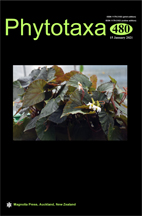Abstract
Begonia nangunheensis belonging to Begonia sect. Platycentrum is described and illustrated as a new species in Caryota obtusa forests in Yunnan province of China. It is similar to Begonia siamensis in 3-winged fruits, 2-loculed ovary and axile placentation with 2 segments per locule, but differs in its glabrous petiole and abaxial leaf-blade, ovate outer tepals and oblanceolate to narrowly obovate inner tepals of staminate flower, and the unequal pistillate tepals. The new species is assigned to Critically Endangered according to the guidelines of IUCN Red List Categories and Criteria (version 13).

